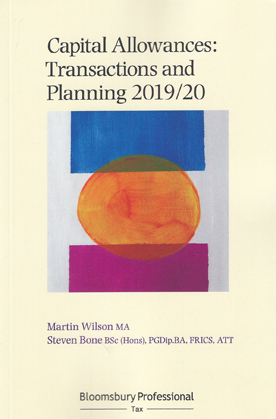
This book has been comprehensively updated to cover all recent developments in this complex area. This includes the rules introducing major changes in the law and practice for claiming capital allowances on property purchases.
Failure to understand and deal with these rules will, in many cases, result in a complete loss of allowances for both buyers and sellers. Inevitably, negligent advisers will face a significant increase in complaints, fee disputes, legal action and consequent claims against PI insurance.
Key developments in this area as announced in the Finance (No. 3) Bill 2017-19 include:
New Structures and Buildings Allowance (SBA)
This will give tax relief at 2% a year for the cost of constructing commercial (non-residential) buildings and structures and will extend to buildings in the UK or overseas provided they are used for a trade, a profession or a property letting business, to the extent that the profits of the activity are subject to UK tax. Practitioners will need to understand what the definitions of 'commercial building' and 'de minimus' are, plus the transitional rules and how they apply.
Annual investment allowance (AIA) increase to £1 million:
The transitional arrangements associated with this change mean that practitioners will need to do complex calculations to work out available AIA, where chargeable periods straddle 1 January 2019, the date when thresholds change.
Abolition of some environmental enhanced capital allowances:
While ECAs were originally a welcome relief, they were hard to claim and with the AIA now increasing to £1m, ECAs will only be worth claiming if the total qualifying expenditure in a year is more than the AIA cap. Reduction in the special rate of plant and machinery allowances:
This has been reduced from 8-6%, largely to offset the upfront cost of introducing the SBA.
SSE Generation Limited v HMRC [2018] UKFTT 416 (TC):
Important case involving certain parts of CAA 2001 dealing with structures and buildings, bringing issue to the meaning of 'plant'.
This print edition also consolidates changes made via the previous two years' online updates, including restructuring of historical content and updated commentary on: